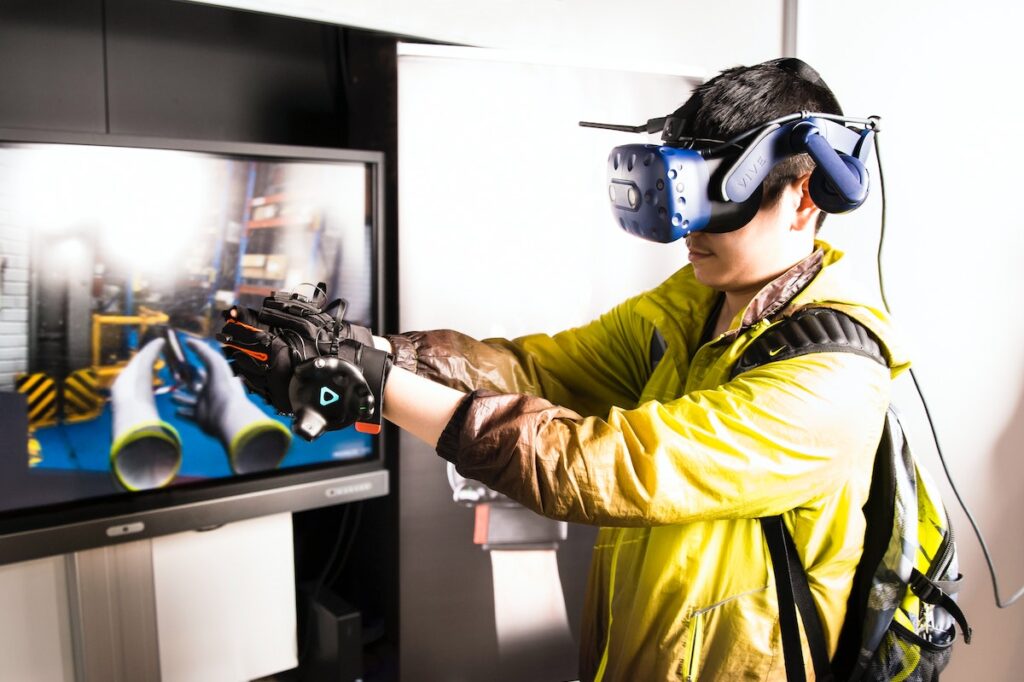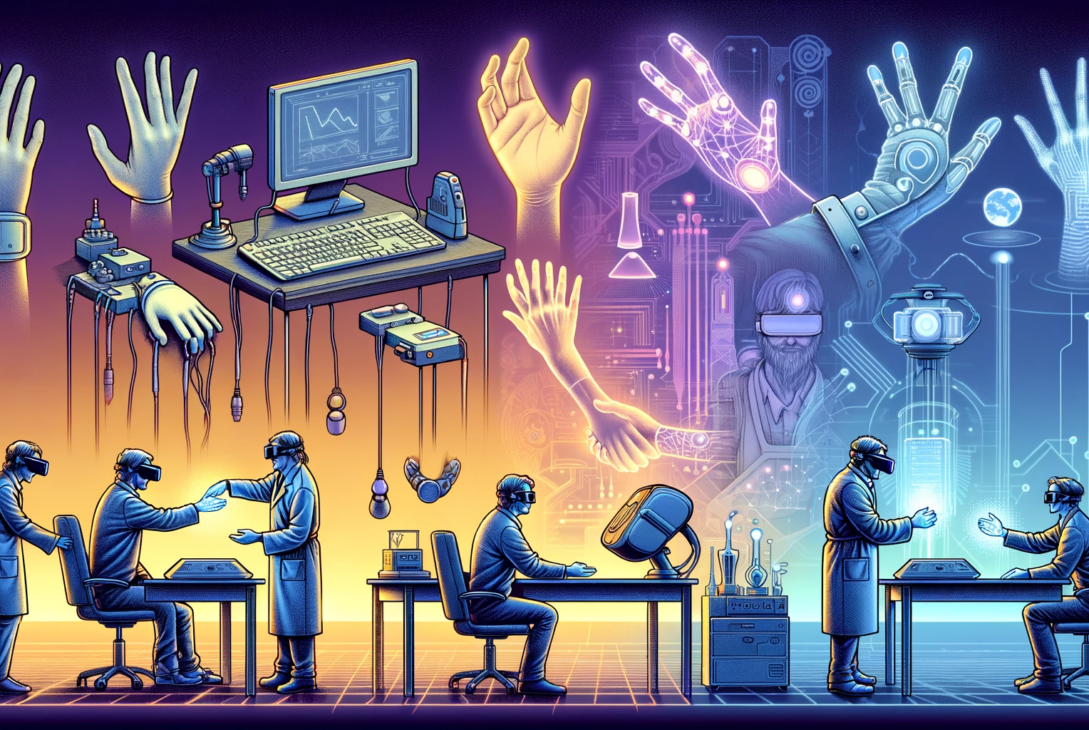In the realm of technological advancements, the development of haptic technology marks a significant milestone. This technology, aiming to simulate touch and physical interaction, has evolved beyond its nascent stages to become a cornerstone in various fields, including virtual reality (VR), robotics, and medicine. The journey of haptic technology began with the simple goal of adding the sense of touch to the digital experience, bridging the gap between the virtual and real worlds.
Understanding Haptics: More Than Just Vibration
Haptic technology, at its core, is about recreating the sense of touch by applying forces, vibrations, or motions to the user. It goes beyond the traditional vibration feedback found in mobile phones. Early forms of haptics were limited in scope, offering basic sensations that could only hint at the potential of this technology. However, as research deepened, haptic feedback became more sophisticated, capable of delivering diverse and complex tactile experiences.
The Evolution: From Simple Buzzes to Complex Textures
The evolution of haptic technology has been rapid and transformative. Initially, it was all about creating simple alerts through vibrations. Today, the technology has progressed to simulate intricate textures and surfaces. This leap was made possible by advancements in actuators and sensors, enabling devices to produce a wide range of tactile sensations. From the buzz of a smartphone to the feeling of raindrops in a virtual environment, haptic technology has expanded the boundaries of sensory experience in technology.
Virtual Reality: The New Frontier for Haptics
One of the most exciting applications of haptic technology lies in the realm of virtual reality. VR has always promised an immersive experience, but the inclusion of haptic feedback has taken this immersion to new heights. Imagine feeling the texture of virtual objects, the resistance of a virtual wall, or the handshake of a character in a digital world. This level of interaction was unthinkable a few decades ago, but haptic technology is making it a reality.
The Mechanism Behind Haptic Feedback in VR
In VR, haptic feedback is achieved through various means. Gloves equipped with sensors and actuators can simulate the sensation of touch and pressure, allowing users to ‘feel’ virtual objects. Platforms and suits equipped with haptic feedback can simulate environmental factors like temperature changes or impacts. This integration of haptic technology in VR gear is not just about enhancing the gaming experience; it’s about creating a fully tactile virtual world that can be used for training, education, and even remote social interactions.

Photo taken from MassChallenge.
Beyond Gaming: The Versatility of Haptic Technology
While VR and gaming are the most visible applications of haptic technology, its potential extends far beyond entertainment. In the medical field, haptic feedback is revolutionizing training and surgical procedures. Surgeons can now practice complex operations in a virtual environment, feeling the texture of tissues and the resistance of organs, without the risks associated with real-life surgeries. This technology is also making remote surgery a feasible option, with surgeons able to operate on patients from miles away, feeling and manipulating virtual representations of the patient’s anatomy.
Haptic Feedback in Everyday Life
The influence of haptic technology extends to everyday life, enhancing user experiences in ways previously unimagined. From smartphones that provide tactile feedback when typing on a virtual keyboard to wearable devices that use gentle vibrations for notifications or guidance, haptic technology is becoming an integral part of our daily interactions with technology. This is not just about enhancing user experience; it’s about creating a more intuitive and natural interaction with our devices.
The Challenges: Accuracy and Realism
Despite its advancements, the development of haptic technology faces significant challenges. One of the primary challenges is creating sensations that are accurate and realistic enough to convincingly mimic real-world interactions. This requires intricate balance and precision in the design of actuators and sensors, as well as sophisticated software algorithms to accurately replicate the textures, temperatures, and resistance of various materials. The quest for realism in haptic feedback is ongoing, with researchers continually pushing the boundaries of what’s possible.
Haptic Technology in Education and Training
Beyond entertainment and daily use, haptic technology has profound implications in education and training. It enables a hands-on learning experience in a virtual setting, which is especially beneficial in fields where practical experience is crucial but difficult to obtain. For instance, engineering students can feel the texture and weight of materials they’re studying, or archaeology students can explore ancient artifacts without the risk of damaging precious items. This tactile dimension of learning deepens understanding and retention of knowledge.
Integration in Remote Communication
As we delve deeper into the 21st century, remote communication has become a mainstay of our daily lives. Haptic technology is set to revolutionize this domain by enabling people to experience physical sensations in real-time during digital interactions. Imagine feeling a friend’s pat on the back or a family member’s embrace, even when they are miles away. This level of emotional and physical connection in remote communication could greatly reduce the sense of distance and isolation that often accompanies digital interactions.
Enhancing Accessibility Through Haptic Feedback
Haptic technology also holds tremendous promise in enhancing accessibility, particularly for individuals with visual or auditory impairments. By converting visual or auditory cues into tactile feedback, this technology can help people with disabilities navigate their environments and interact with digital content more effectively. For instance, a visually impaired person could use a haptic-enabled device to ‘feel’ the layout of a webpage or a smartphone screen, thus making digital content more accessible and inclusive.
The Role of Haptics in Automotive Industry
In the automotive industry, haptic feedback is being integrated into vehicles to improve safety and user experience. Haptic steering wheels or seats can alert drivers to potential hazards or provide feedback about the vehicle’s performance. This subtle yet effective form of communication can enhance driver awareness without the distractions associated with visual or auditory alerts.
The Challenge of Haptic Latency and Feedback Loop
One of the technical challenges in advancing haptic technology is minimizing latency. For a haptic interaction to feel natural, the feedback must be nearly instantaneous. Any delay between the user’s action and the haptic response can disrupt the sense of immersion and realism. Overcoming this challenge requires not just faster hardware, but also more efficient software algorithms to create a seamless haptic feedback loop.
Sustainability and Ethical Considerations
As haptic technology becomes more widespread, considerations of sustainability and ethics come into play. The production of haptic devices involves materials and processes that have environmental impacts. Additionally, as haptic technology becomes more immersive, ethical considerations regarding its use and the potential for over-reliance or misuse must be addressed. Ensuring that haptic technology is developed and used responsibly is crucial for its long-term viability and acceptance.
Collaborative and Social Experiences in Haptic Environments
Haptic technology is not just about individual experiences; it opens up new avenues for collaborative and social interactions in virtual spaces. In a world where online collaboration is increasingly commonplace, being able to physically interact with virtual objects or environments can significantly enhance teamwork and creativity. From architects feeling the texture of materials in a virtual building model to musicians feeling the vibration of instruments in a virtual jam session, haptic technology can enrich collaborative experiences in profound ways.
The Potential for Therapeutic Applications
The therapeutic potential of haptic technology is another area of significant interest. It can be used in rehabilitation programs, allowing patients to regain motor skills through virtual exercises that provide tactile feedback. Additionally, haptic technology can be used in mental health treatment, offering new ways to manage anxiety or stress through calming tactile stimuli.
The Road Ahead: Innovations and Explorations
As we look to the future, the possibilities of haptic technology continue to expand. Innovations in materials science, such as the development of softer, more skin-like haptics, could lead to even more realistic tactile experiences. The exploration of haptic technology in new domains, such as augmented reality (AR) or mixed reality (MR), hints at a future where digital and physical worlds blend seamlessly.




